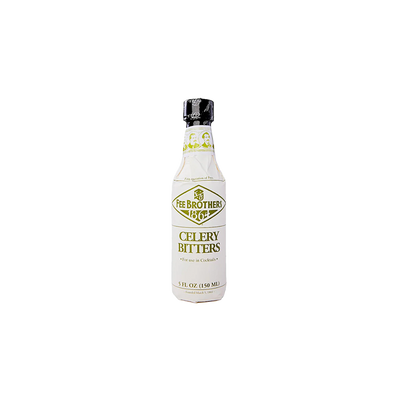Herbal Bitters
What are Herbal Bitters?
Herbal bitters represent a specific category within Herbal & Spiced Bitters that focuses primarily on botanical ingredients like roots, leaves, flowers, and stems rather than warming spices. These concentrated flavor enhancers are defined by their emphasis on medicinal and culinary herbs such as gentian root, wormwood, dandelion, or chamomile, creating complex bitter profiles that add depth and balance to cocktails. The herbal character typically provides earthy, floral, or green notes that complement the fundamental bitter backbone essential for classic cocktail recipes.
Learn More About Herbal Bitters
What makes Herbal Bitters unique?
Herbal bitters stand apart from their spiced counterparts by focusing on the green, leafy essence of botanicals rather than warm, aromatic seeds and bark. While other herbal and spiced bitters might combine multiple flavor profiles or lean heavily into single dominant notes like citrus or floral elements, herbal bitters specifically showcase the complex vegetal characteristics of herbs like gentian, wormwood, dandelion, and various medicinal plants. This creates a distinctly earthy, sometimes medicinal backbone that adds botanical complexity to cocktails without the sweetness of fruit-based bitters or the warming heat of spice-driven varieties.
How are Herbal Bitters made?
Herbal bitters start with a neutral grain spirit that gets infused with a carefully selected blend of botanicals like gentian root, wormwood, chamomile, and various herbs through maceration - basically soaking the ingredients for days or weeks until the alcohol extracts all those concentrated flavors and aromatic compounds. The mixture is then strained, filtered, and often aged to allow the flavors to marry and mellow. Some producers use multiple infusion stages, adding delicate herbs later in the process to preserve their subtle characteristics, while others employ heat or pressure to speed up extraction.
How do you drink Herbal Bitters?
Herbal bitters are almost exclusively used as cocktail ingredients rather than sipped neat, though some adventurous drinkers might take a small neat taste to understand the flavor profile. These concentrated botanical elixirs shine brightest when added by the dash or dropper to classic cocktails like Old Fashioneds, Manhattans, and Whiskey Sours, where they add complexity and depth without overwhelming the base spirit. You'll find herbal bitters working their magic in brown spirit cocktails, gin-based drinks, and even some contemporary craft cocktails where bartenders use them to bridge flavors and add aromatic intrigue.
How do I choose good Herbal Bitters?
Start by considering your cocktail's base spirit and flavor profile—gentian-heavy bitters work beautifully with whiskey and aged spirits, while lighter herbal blends complement gin and vodka drinks. Think about whether you want your bitters to add complexity without stealing the show (go for balanced blends like Angostura or Peychaud's) or if you're looking to make a statement with bold, distinctive flavors like Chartreuse-forward or lavender-dominant varieties. The best approach is to taste your way through different styles, keeping notes on which herbal combinations sing in your favorite drinks—what works in a Manhattan might completely transform a Martini, so let your cocktail repertoire guide your collection.
Nutritional Information
Typical Calorie Range per Ounce: 5-15 calories
Typical Carbohydrate Range per Ounce: 1-3 grams
Typical Sugar Range per Ounce: 0-2 grams
Typically Gluten Free: Yes
Most herbal bitters are naturally gluten-free since they're made from botanicals, herbs, and spices rather than grain-based ingredients. The alcohol used as a base is usually distilled, which removes gluten proteins even if derived from wheat. That said, some specialty bitters may contain additives or flavorings that could introduce gluten. Always check the specific product label and manufacturer information to confirm gluten-free status, especially if you have celiac disease or severe gluten sensitivity.
Scrolled this far? Your reward? Herbal Bitters Trivia!
- The original Angostura bitters was created by a German doctor in Venezuela as a cure for seasickness and stomach troubles for Simon Bolivar's army in 1824. Dr. Johann Siegert never revealed his secret recipe, and today only five people on Earth know the complete formula - they're not even allowed to travel on the same plane together to protect the company's most valuable secret.
- That iconic oversized Angostura label isn't a design choice - it's actually a happy accident from 1870. The Siegert brothers ordered labels and bottles separately for a competition, but they didn't coordinate sizes. Rather than reorder, they kept the mismatched combo, and the distinctive look became so popular they never changed it back.
- Peychaud's bitters, essential for a proper Sazerac, contains a mysterious red dye that pharmacist Antoine Peychaud added to distinguish his product from competitors in 1830s New Orleans. The exact source of that signature pink hue remains a trade secret nearly 200 years later, though some suspect it involves cochineal insects.
- Many herbal bitters contain more alcohol than most wines - typically ranging from 35-45% ABV. This high alcohol content isn't for flavor; it's the only way to extract and preserve the complex botanical compounds from roots, barks, and herbs. Without it, your bitters would spoil within weeks instead of lasting decades.
- The phrase "hair of the dog" originated from herbal bitters marketing. In the 1800s, bitters companies literally advertised their products as hangover cures using this exact phrase, claiming that the bitter herbs would counteract alcohol's effects. While the science was questionable, the marketing stuck, and bartenders still reach for bitters when customers need morning-after relief.
Higher-proof spirits can be intense. Mix carefully, taste thoughtfully, and enjoy responsibly.
Gift message (optional)


